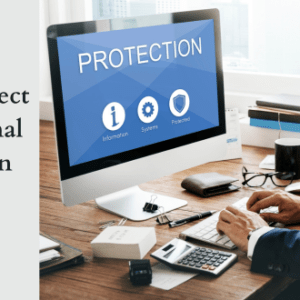Introduction
As the use of online applications grows, OWASP penetration testing is still crucial for safeguarding and securing your digital assets. This comprehensive manual acts as a useful compass, guiding you through the complex web application penetration testing environment supported by the renowned OWASP Testing Framework.
Throughout this blog, we will examine the OWASP penetration testing pillars. The fundamental ideas guiding this discipline will be explained here while dissecting useful methods and introducing you to the equipment utilized by professionals. A comprehensive understanding of this dynamic field while drawing a direct line to the well-known OWASP is also carried out. Let’s dissect each notion of OWASP penetration testing one concept at a time.
What Is the OWASP?
OWASP is a term you will surely run into if you are researching cyber security. The Open Web Application Security Project, a crucial pillar of the cyber security landscape, is what it stands for. The improvement of software security is the focus of this global nonprofit organization. If you are using Kali Linux as your main operating system or on a virtual machine, you have probably already come across several OWASP tools, like the pre-installed Zed Attack Proxy (ZAP). They are priceless tools for both new and experienced experts in the field of cyber security.
The goals of OWASP go beyond just creating tools. They are dedicated to establishing a community centred on online application security, advocating secure coding techniques, and offering materials on common security threats. The OWASP Top 10 stands out among OWASP’s many contributions. It serves as a must-read manual for everyone charged with securing or maintaining online applications. It is a frequently updated list of the most significant security dangers to web applications.
Learn About Attacking Methods
The OWASP Top 10 gives you a glimpse into the strategies used by bad actors to exploit these flaws, in addition to introducing you to the most typical vulnerabilities. When conducting penetration testing or bug hunting, this knowledge can teach you to think like an attacker, a crucial ability for identifying and potentially exploiting flaws.
For instance, if “injection” is at the top of the list, OWASP will inform you that injection vulnerabilities are widespread and give cases of how these flaws are commonly used against you. You can use this knowledge to improve the effectiveness of your injection attacks or the thoroughness of your testing for these vulnerabilities.
Keep up with Changing Threats
The cyber security environment is dynamic and constantly changing as new vulnerabilities are found, and technology develops. The OWASP Top 10 is updated frequently to reflect these changes, ensuring that you are always up to current on the state of online application security.
You will constantly be aware of new entries, the rising or falling incidence of particular hazards, and the advent of unique attack strategies if you stay up to date with these updates. Your testing and mitigation procedures must continue to be relevant and effective in order to do so. Keep in mind that staying informed involves more than just being informed; it also involves being ready. The more you are aware of the threats, the more equipped you will be to combat them.
The OWASP Top 10 is a dynamic list of vulnerabilities that illustrates how online application security concerns are constantly changing. By using the most recent version, you are giving yourself the best tools and knowledge to succeed in your cyber security career.
Ultimately, by concentrating your testing on the OWASP Top 10, you increase the security of the application you are testing and support the larger goal of raising awareness of web application security inside your company.
Why Do We Use OWASP Top 10?
Now that you are aware of the OWASP Top 10 and how to apply it in your cyber security journey, let’s look at why this resource is so well-known and regarded in the sector. The widespread use of the OWASP Top 10 can be attributed to four main factors listed below:
Common Vulnerabilities Identification
The OWASP Top 10 essentially offers an overview of the most frequently discovered web application vulnerabilities. It is based on substantial data that has been acquired from many security groups around the world. As a penetration tester, concentrating on these major risks will enable you to identify and take advantage of the majority of vulnerabilities in a given application. Your effectiveness and the potential impact of your job both increase as a result.
Encourages Compliance
The OWASP Top 10 has an impact on regulatory compliance. The OWASP Top 10 are referred to in the regulations of numerous regulating bodies and standards organizations. Therefore, a penetration test that evaluates these vulnerabilities can help an organization comply with pertinent laws and regulations, preventing possible fines and reputational harm.
Reducing Security Ignorance
Increased security awareness is a significant advantage of using the OWASP Top 10 in penetration testing. You may alert your company or clients to the most urgent dangers to web application security by consistently focusing on and reporting on these top concerns. This increased knowledge frequently results in proactive mitigation techniques and a culture that is more concerned with security.
Controlling Secure Coding
The OWASP Top 10 is an essential tool for developers, penetration testers, and bug bounty hunters. It offers priceless advice on secure coding techniques, helping to avoid the introduction of these major vulnerabilities into the codebase in the first place. The OWASP can result in more secure applications by training developers about these typical threats from the start.
Conclusion
Getting around the complicated web application penetration Testing Framework can be challenging. However, you will be well-equipped to conduct efficient security audits with the aid of the strategies, tools, and approaches described in this guide, particularly those in line with the OWASP Top Ten.
This manual is merely a first step in the broad field of application security. It is crucial to comprehend these ideas and become an expert with these technologies but keep in mind that cyber security is an area that is continuously changing. Continuous learning and adaptation to new threats and weaknesses are necessary. For more blogs like this do visit our website All Day Technology.








